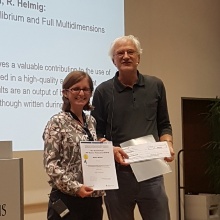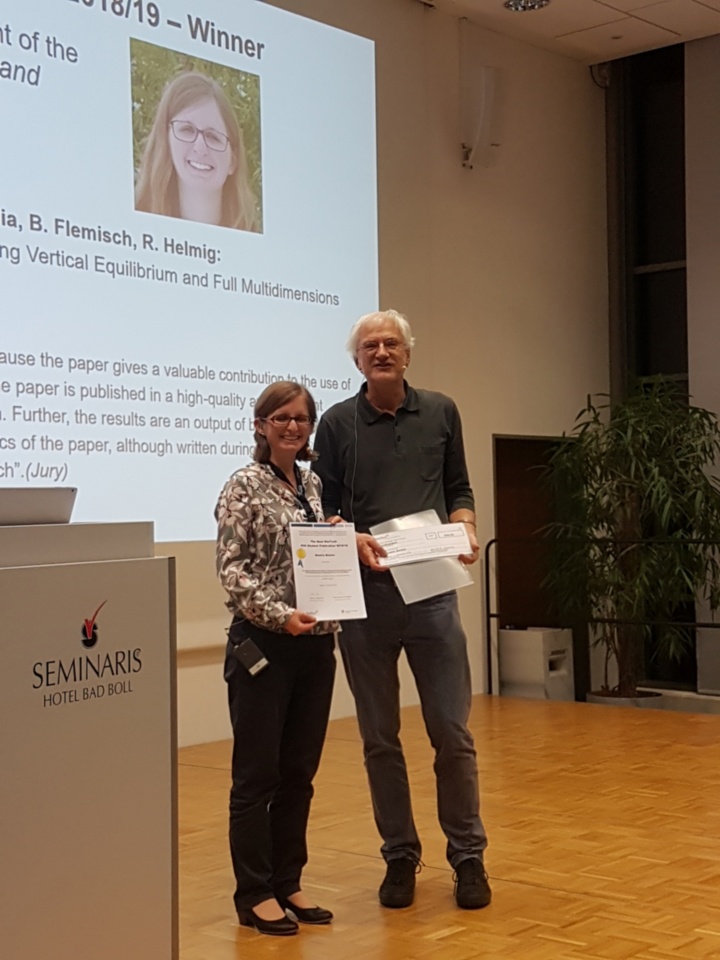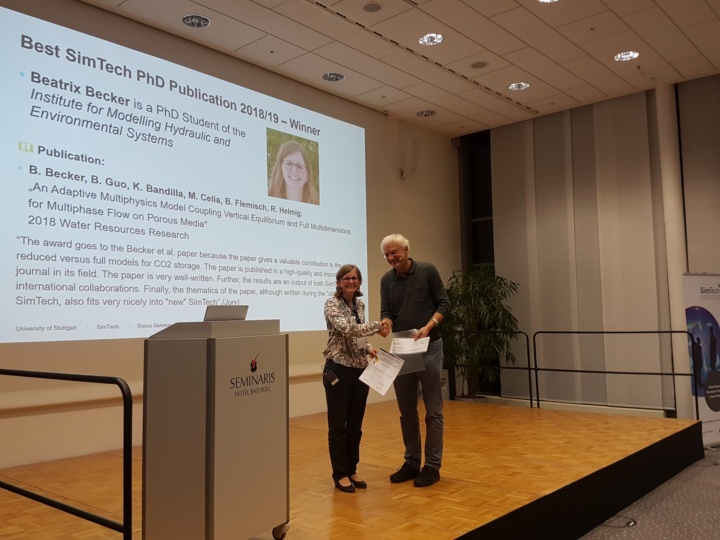At this year's SimTech status seminar, Beatrix Becker, GS SimTech PhD student at the Institute for Modelling Hydraulic and Environmental Systems and member of LH2 and SFB 1313, received the the award for "The Best SimTech PhD Publication 2018/2019" of the Graduate School of the Stuttgart Center for Simulation Science, the SimTech Excellence Cluster and the Industrial Consortium SimTech e. V. (endowed with 500 euros) for the publication "An Adaptive Multiphysics Model Coupling Vertical Equilibrium and Full Multidimensions for Multiphase Flow in Porous Media", which was created in collaboration with BO Guo, Karl Bandilla, Michael A. Celia, Bernd Flemisch and Rainer Helmig and published in Water Resources Research in 2018.
The jury justifies its decision as follows: „The award goes to Becker et all. paper because it gives a valuable contribution to the use of reduced versus full models for CO2 storage. The paper is published in a high quality and important journal in its field. The paper is well written. Further, the results are an output of both SimTech and international collaborations. Finally, the thematic of the paper, although written during the “old” SimTech, also fits very nicely into “new” SimTech.”
Abstract
Efficient multiphysics models that can adapt to the varying complexity of physical processes in space and time are desirable for modeling fluid migration in the subsurface. Vertical equilibrium (VE) models are simplified mathematical models that are computationally efficient but rely on the assumption of instant gravity segregation of the two phases, which may not be valid at all times or at all locations in the domain. Here, we present a multiphysics model that couples a VE model to a full multidimensional model that has no reduction in dimensionality. We develop a criterion that determines subdomains where the VE assumption is valid during simulation. The VE model is then adaptively applied in those subdomains, reducing the number of computational cells due to the reduction in dimensionality, while the rest of the domain is solved by the full multidimensional model. We analyze how the threshold parameter of the criterion influences accuracy and computational cost of the new multiphysics model and give recommendations for the choice of optimal threshold parameters. Finally, we use a test case of gas injection to show that the adaptive multiphysics model is much more computationally efficient than using the full multidimensional model in the entire domain, while maintaining much of the accuracy.




